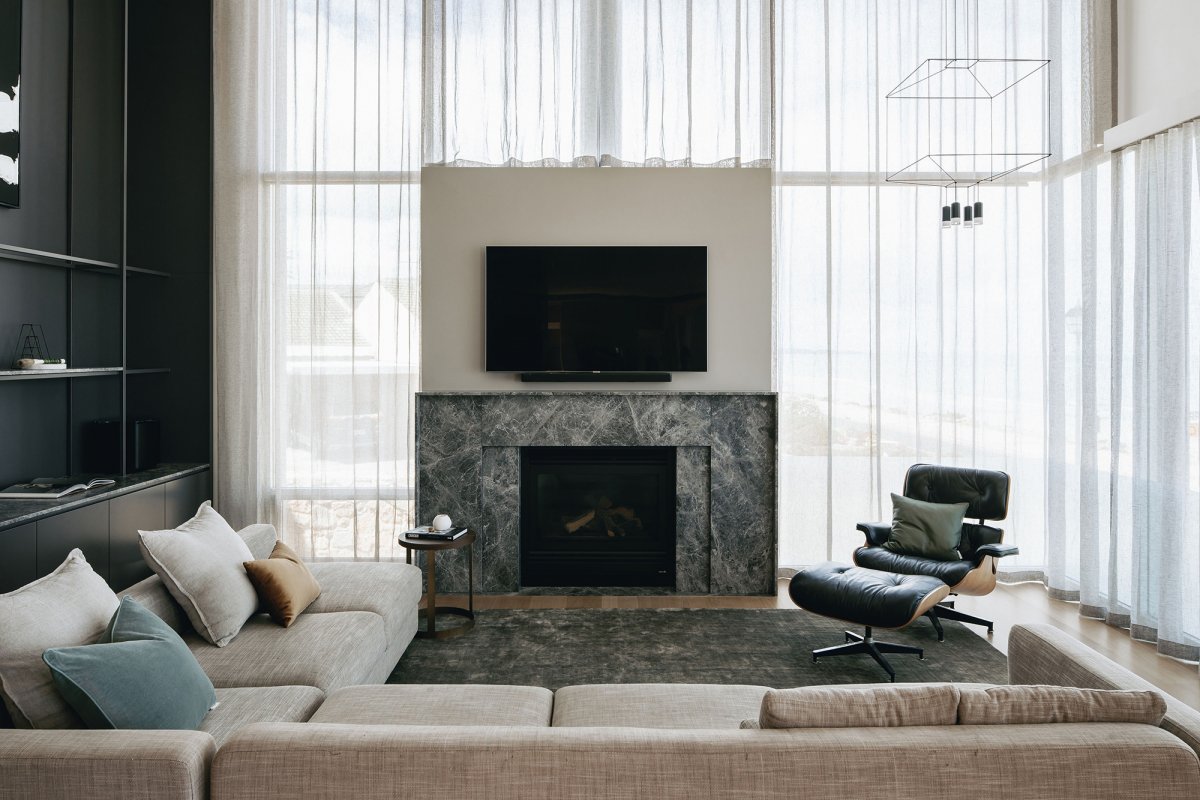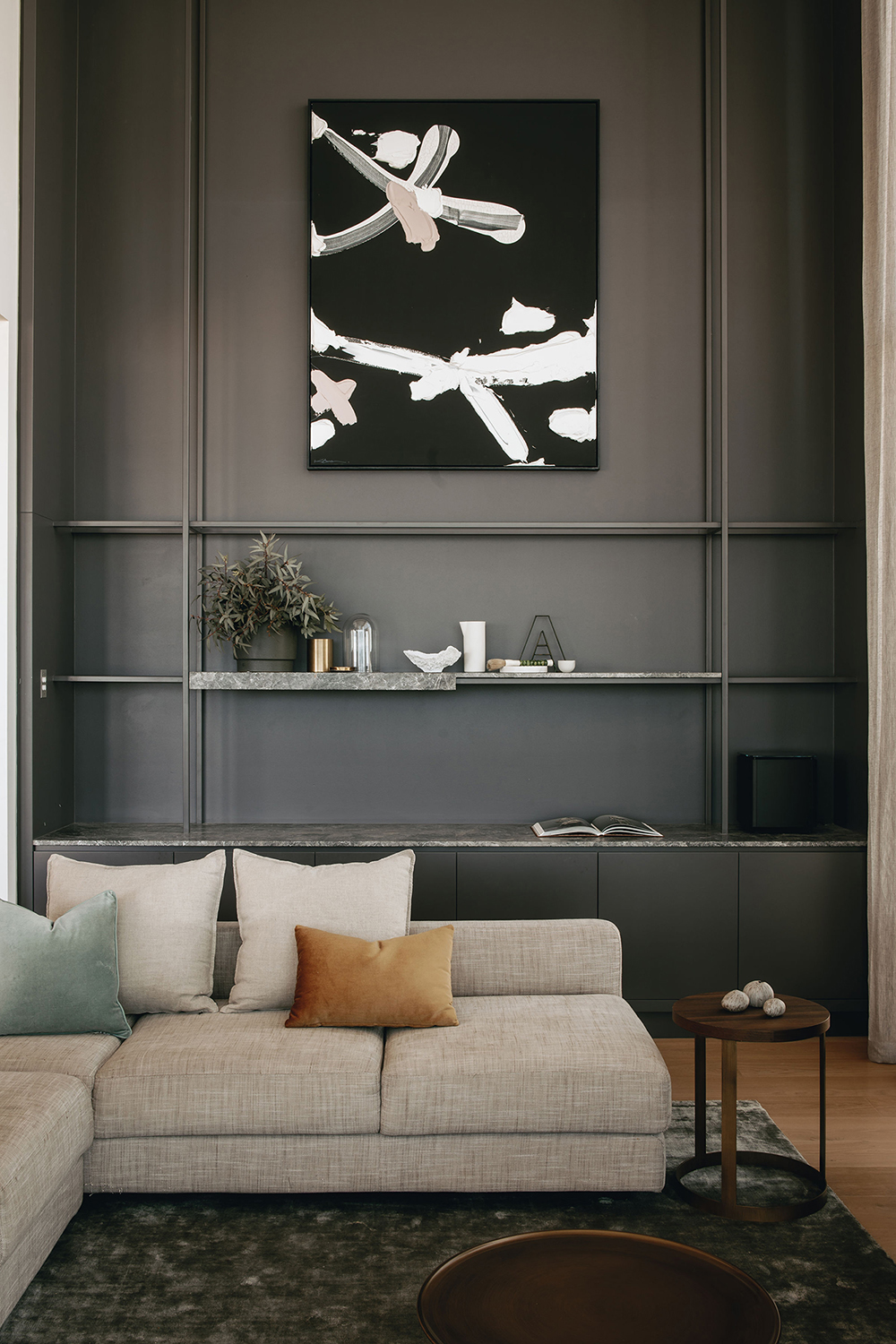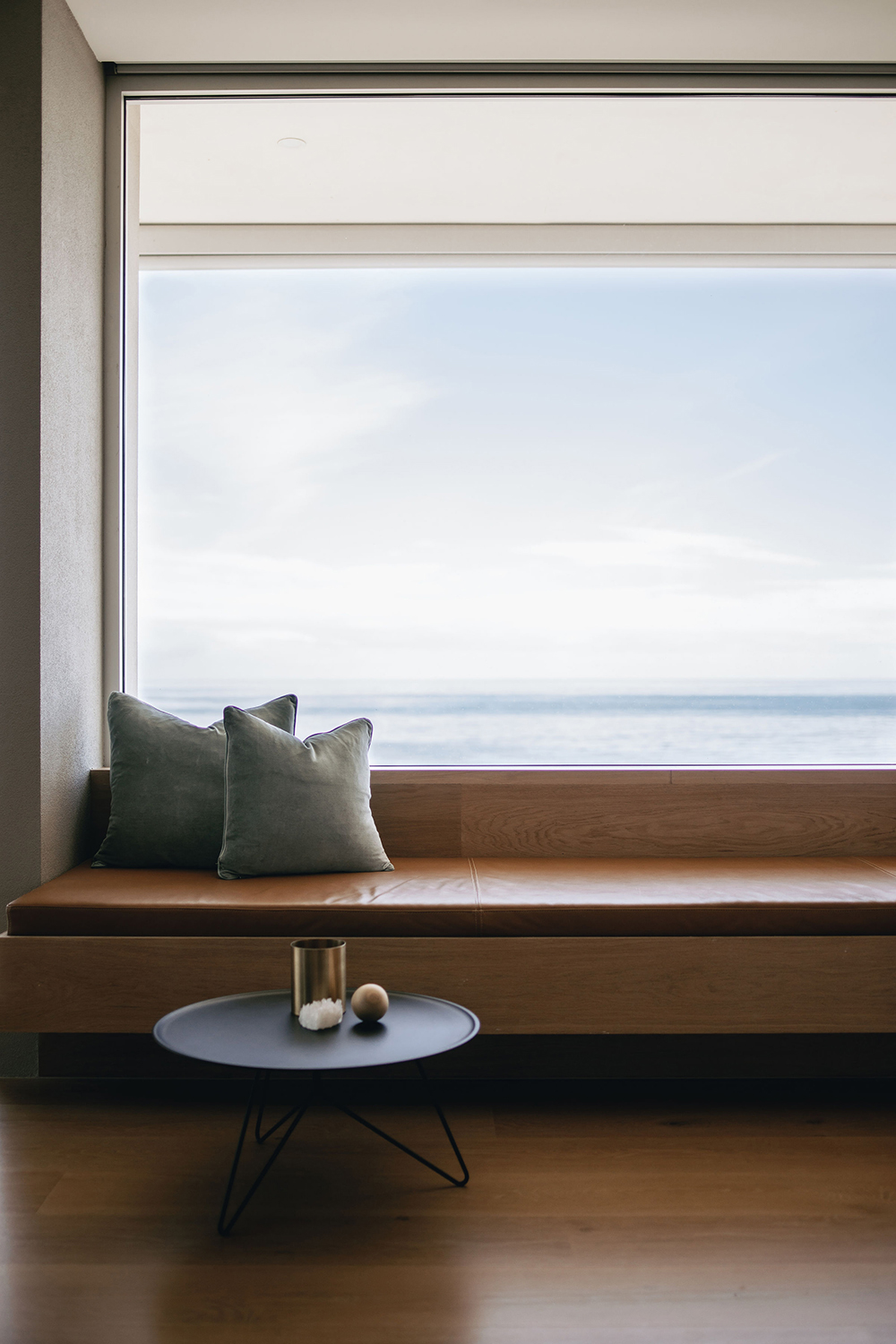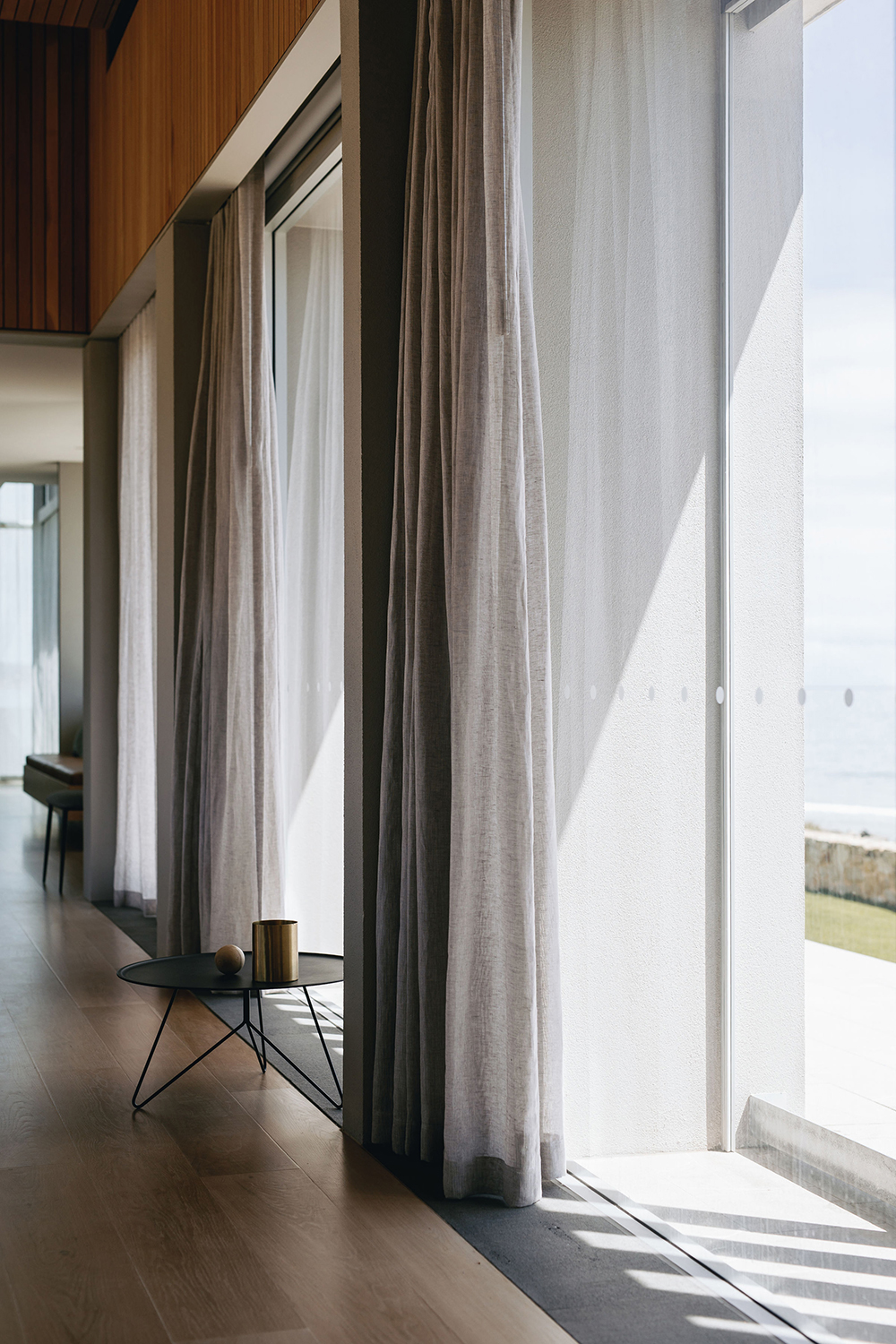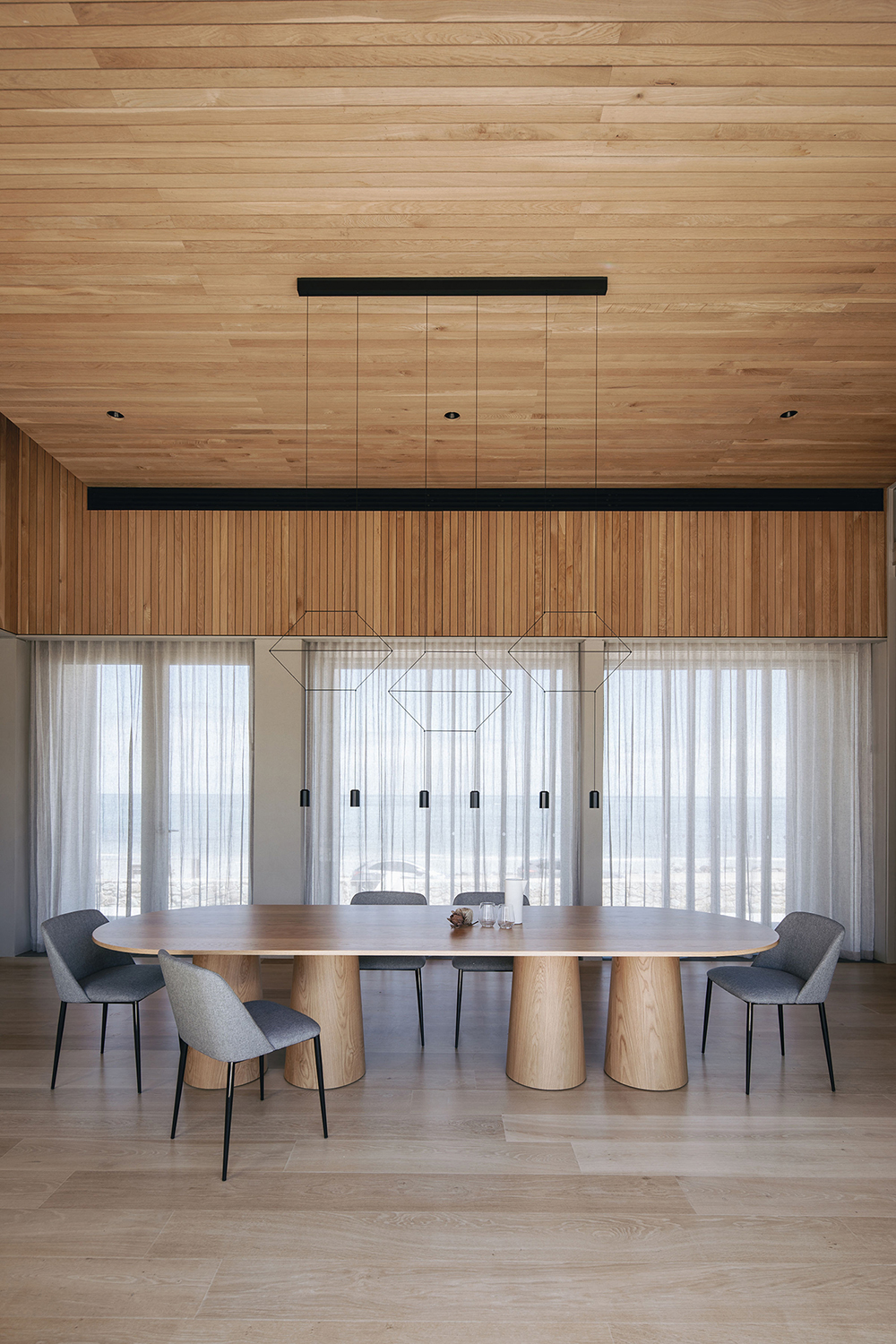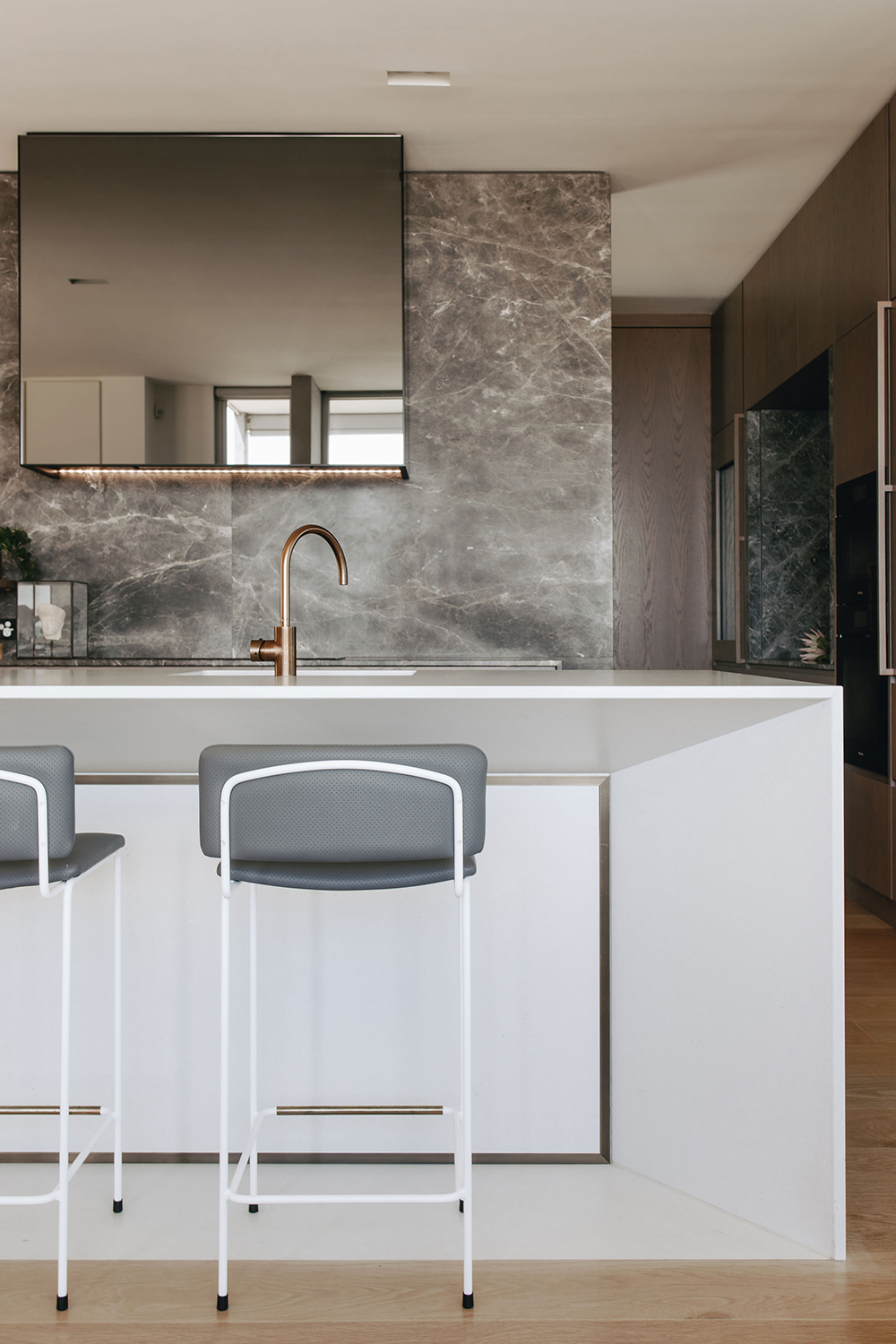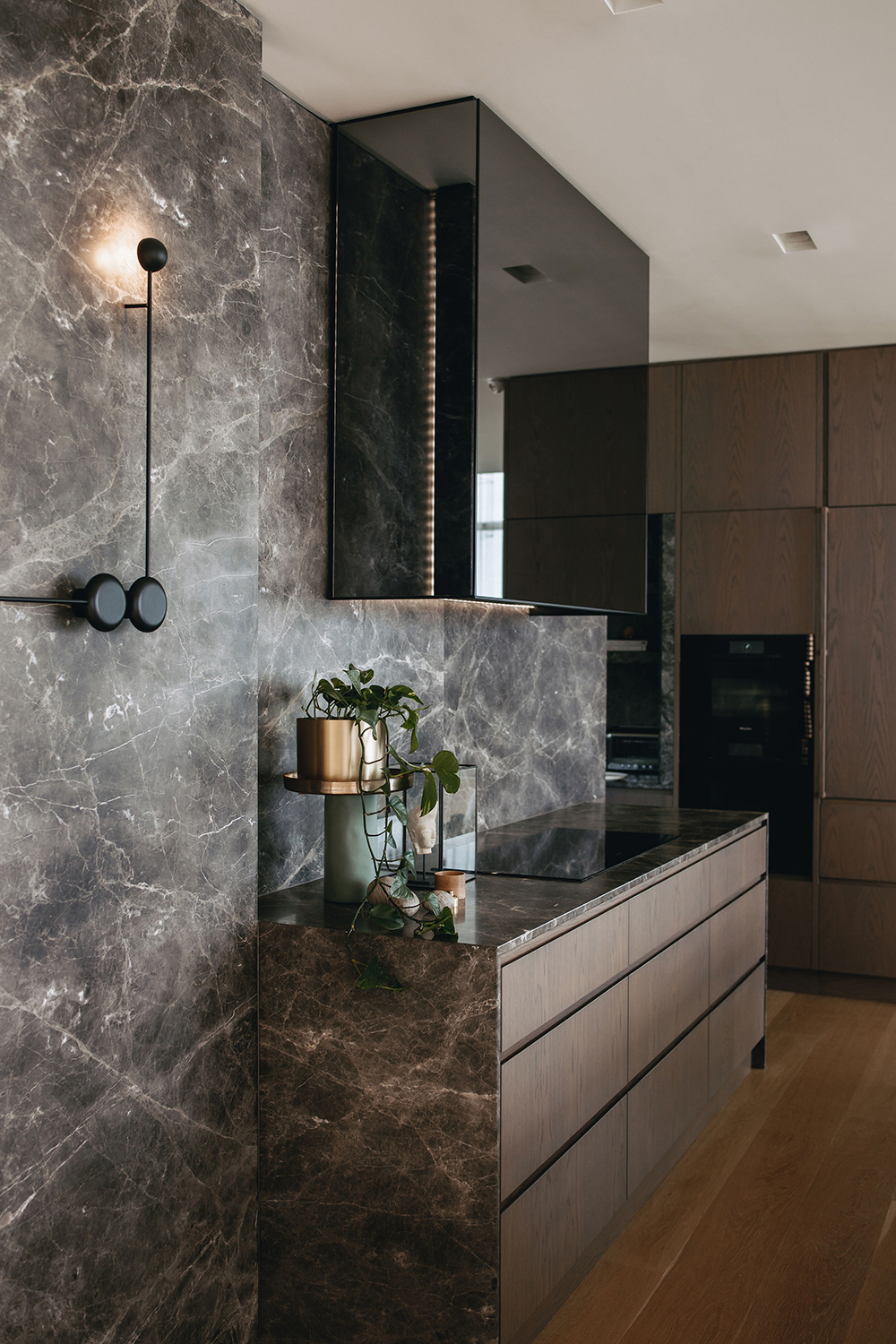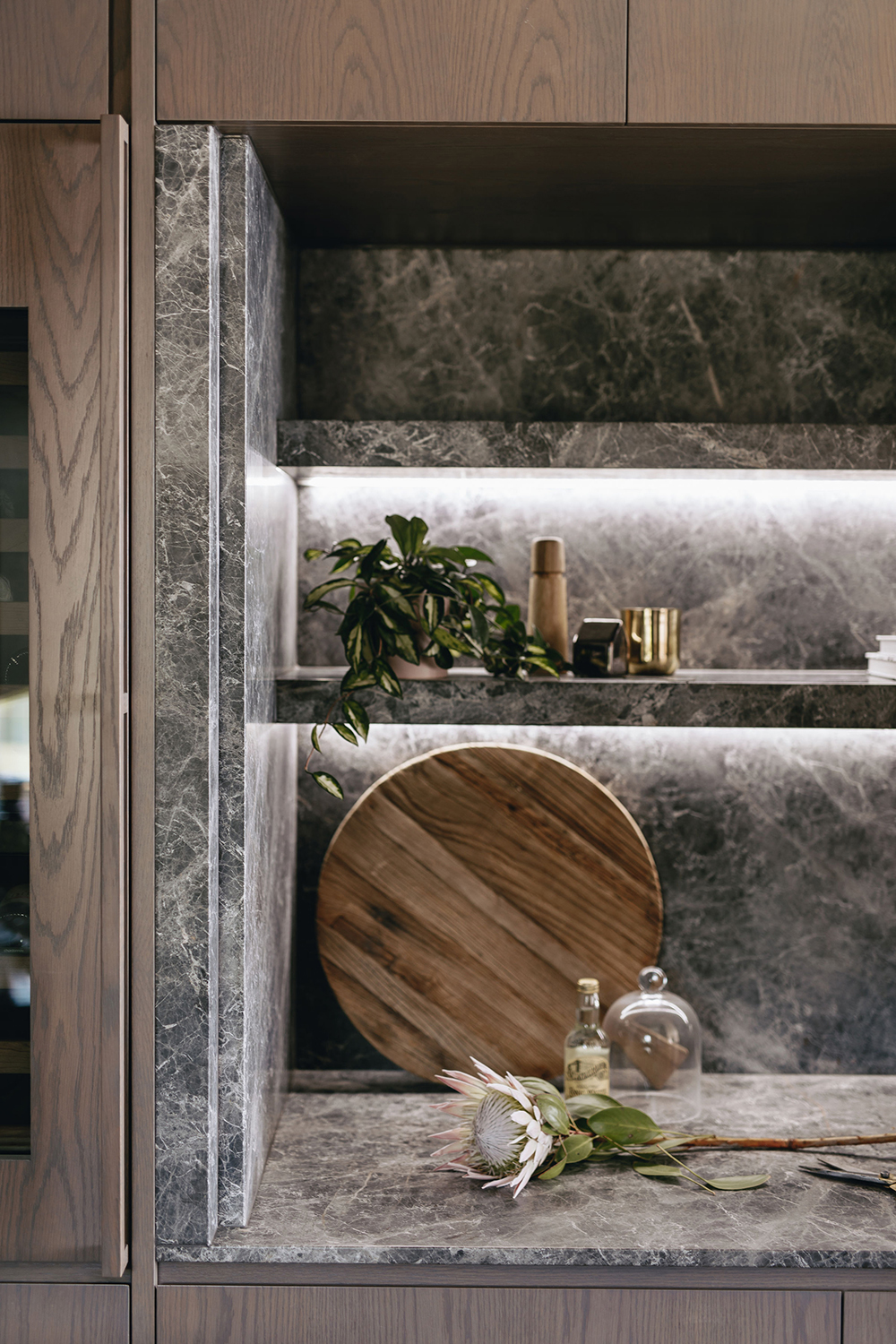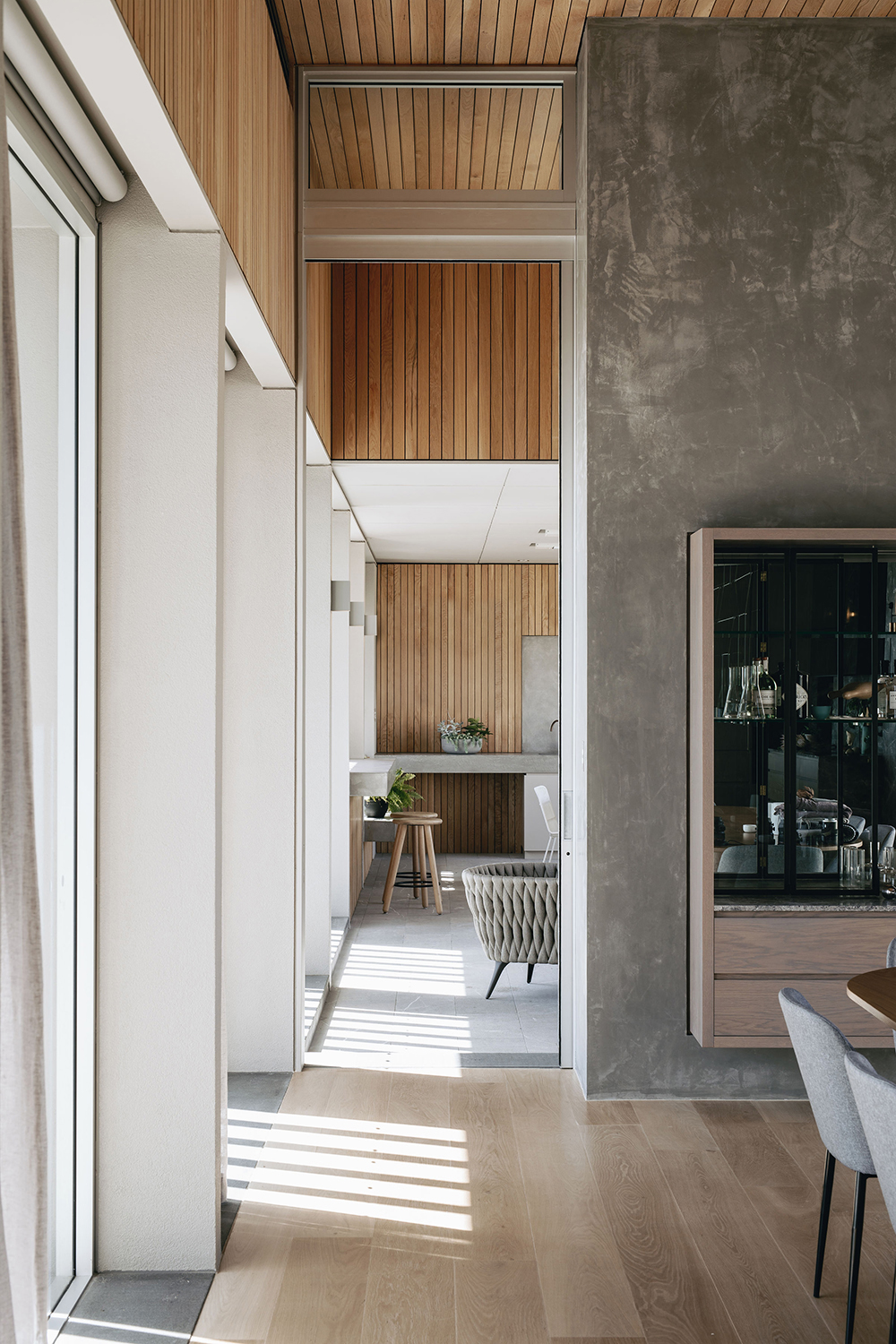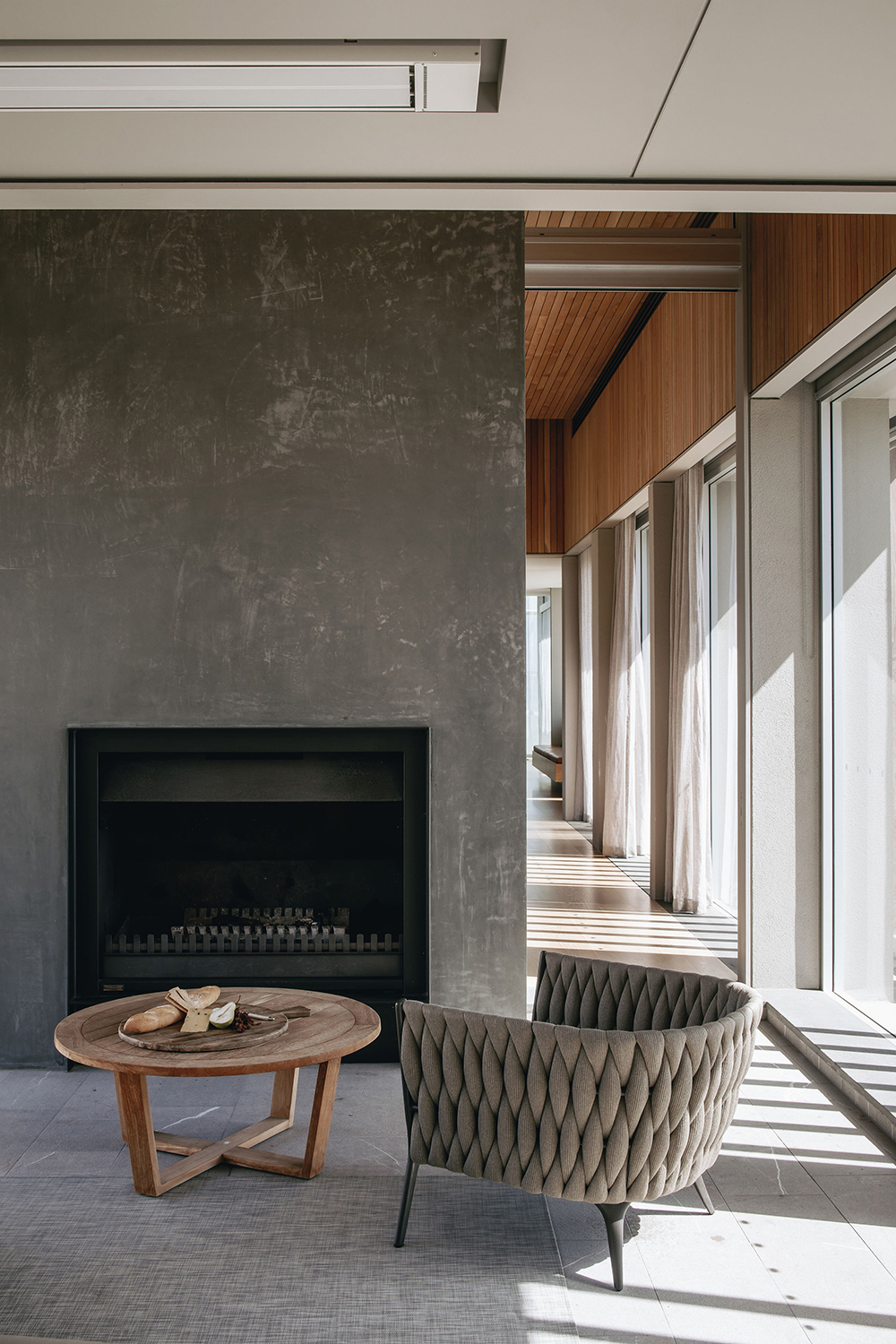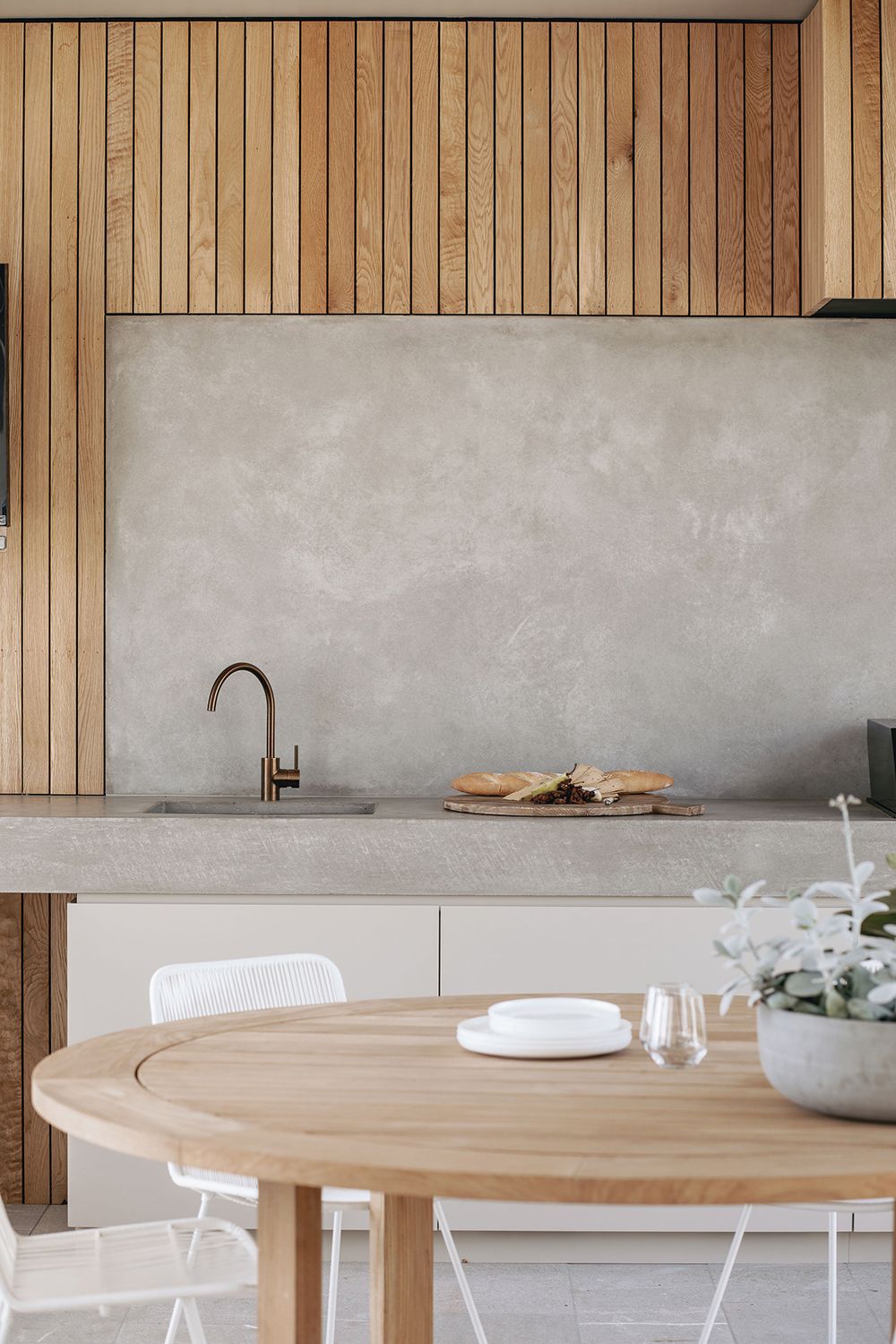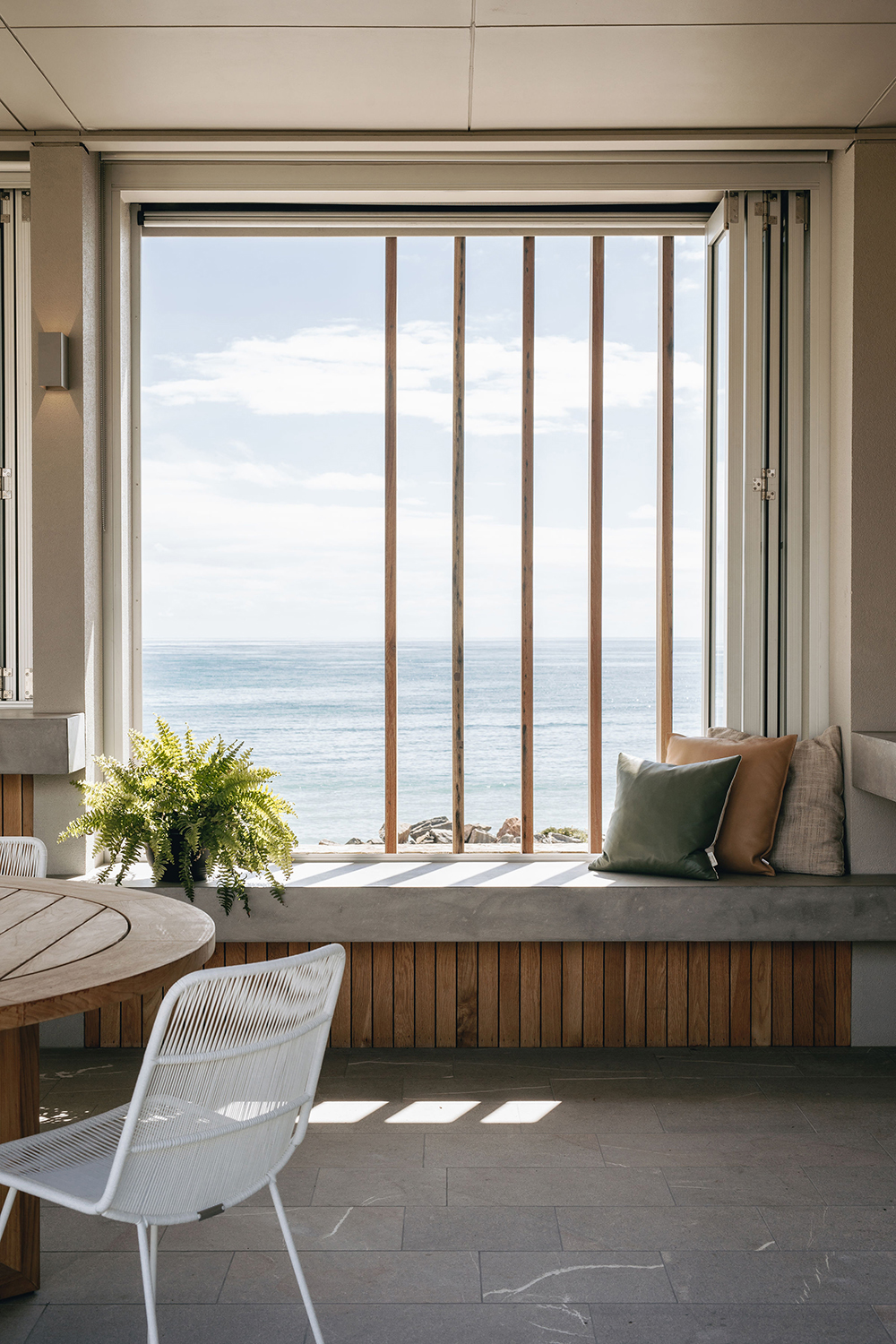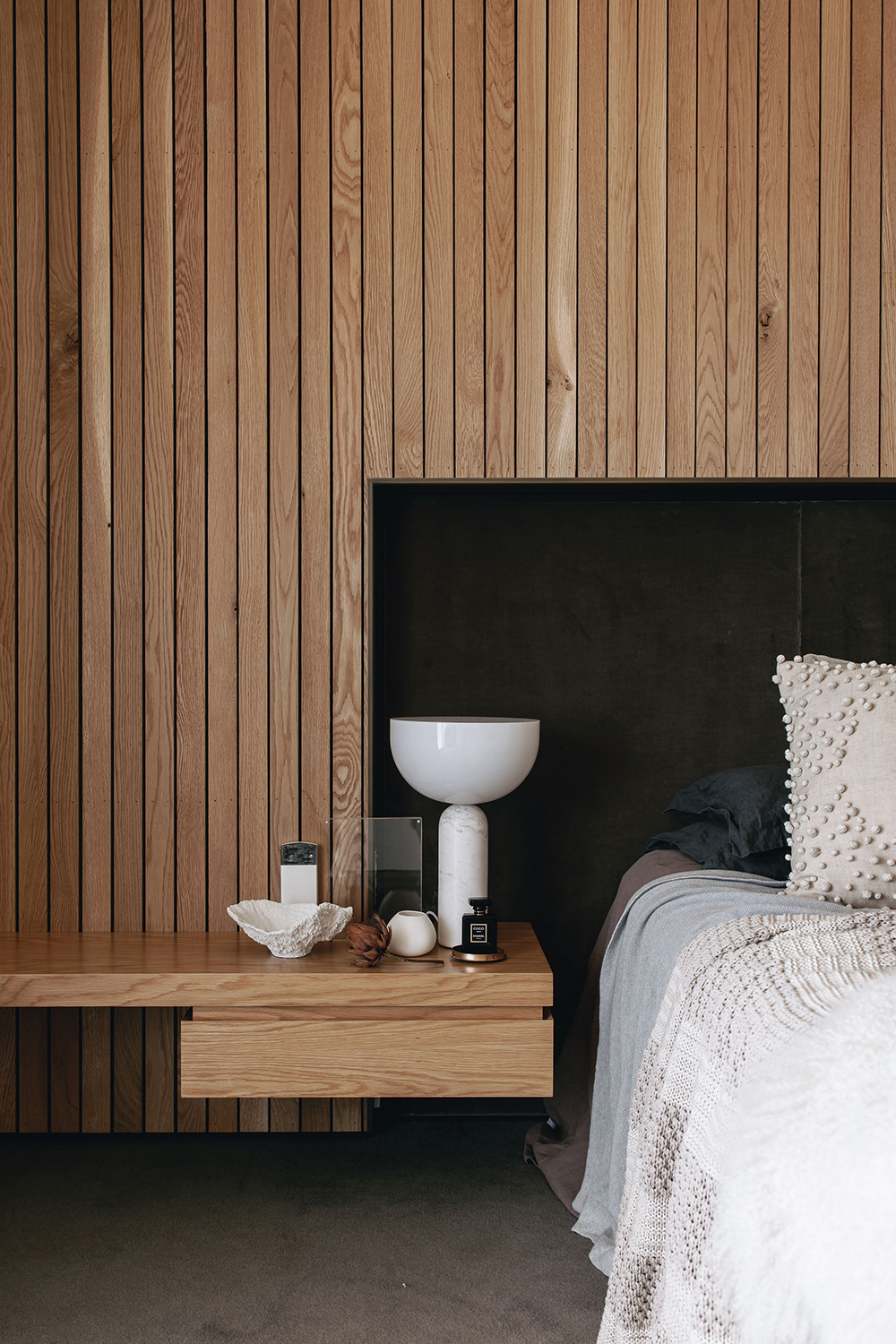
The Esplanade is an uncommon project.As an overarching review of the house, the new additions expand on the existing footprint, incorporating warmth and layering to the existing internal volumes, and expanding with complimentary volumes and spaces. At all times, a connected but protective ethos was adopted to deal with the challenging conundrum of wanting the view, but not wanting to be in the proverbial fishbowl.
The Esplanade with extending the original to embrace its generous ocean view, while also still providing a sense of privacy and security. Through a series of repeated facade elements that echo the classical composition of Roman architecture, a colonnade-type rhythm is created. Behind this sit operable elements that allow for both openness and enclosure, facilitating engagement with the view and landscape beyond. The timber fins allow for both solar and heat gain control, diverting unwanted glare and directing natural light internally. The softness of these timber elements adds a warmth and texture intended to age and weather over time as they adjust to their coastal locale.
Located along the foreshore esplanade of Adelaide’s Glenelg South, The Esplanade fronts the ocean on one side and hugs its site to the other.The addition and expansion works increase the existing overall volume and add form and amenity that complements the original architectural language. Internally, the combination of natural textured plaster, stone and timber all add an elevated sense of luxury, while still maintaining an approachability. The collection of furniture and objects add as an expression of the owners in a restrained and refined way. Through maintaining a sharply minimal and uncomplicated palette, the resulting home becomes an effortless series of spaces.
Through surfaces, the play on natural and architectural lighting and the classical proposed form, Williams Burton Leopardi’s clear understanding of the success of the residential condition affords this home an enduring confidence that speaks not to trending palettes or materiality but to a sense of permanence and unassuming beauty.
- Interiors: Williams Burton Leopardi
- Photos: Christopher Morrison
- Words: Bronwyn Marshall

